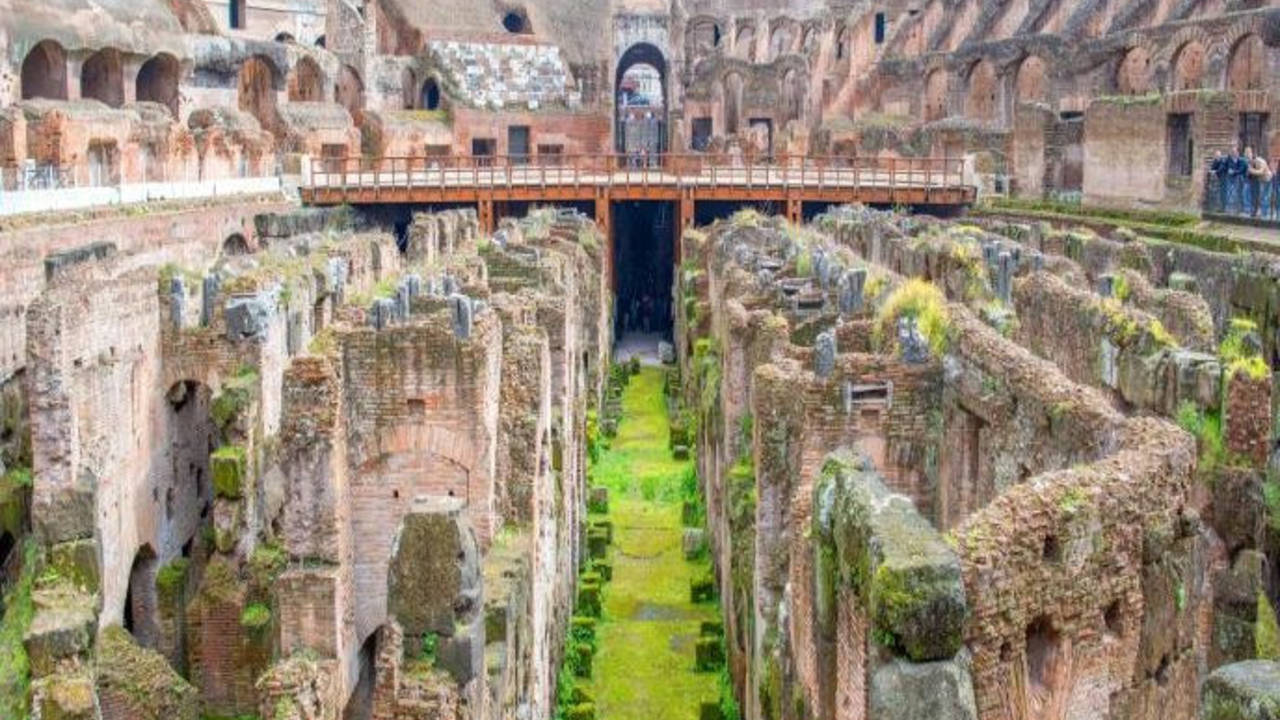A team of civil engineers in France have revealed that the Romans had ancient technology for building structures that acted like modern-day electromagnetic cloaking devices. The pattern of foundations in some major Roman monuments, like the Colosseum, provided protection against earthquakes by bending seismic waves around them.
Ancient Archaeological Metamaterials
The Romans used architectural features in their constructions which acted like ‘metamaterials’, artificial structures that can manipulate electromagnetic or sound waves. For example, surrounding a building with a lattice of holes or solid objects embedded in the soil can have the effect of diverting seismic waves around the monument, effectively creating a seismic ‘invisibility cloak’.
According to Physics World , “When seismic waves within a certain range of wavelengths pass through the lattice, multiple reflections in the lattice interfere with one another destructively to create a band gap that results in a significant reduction in the shaking of the building.”
Modern-day Metamaterials
Manmade metamaterials were first synthesized in the lab in 2000 by using highly conductive metal like gold or copper in certain arrangements, like layered lattice structures. They were developed for a variety of uses, including making ‘super lenses’, that are able to see objects at much smaller scales, and reducing the impact of earthquakes on buildings.

ArsTechnica reported that when researchers compared the modern-day metamaterials with the structures of certain Roman monuments , they found that the patterns in ancient Roman buildings very, very closely resembled metamaterials and may therefore have protected those structures from earthquakes.
Stephane Brûlé, a civil engineer and one of the study’s authors, had worked with a team of engineers from Lyon-based company Menard and researchers from the Fresnel Institute in Marseille, a few years ago to create a large-scaled seismic cloak by drilling an array of boreholes in the soil. Later on, he noticed that a Gallo-Roman theater he visited while on holiday in Autun, France, had the same foundational structure.
Did the Romans already know about the seismic cloaking properties of such an array? It seems likely, as the same pattern was used in the construction of numerous Roman monuments, including many theaters and amphitheaters.

Ancient Roman Technology
In recent decades, research has revealed that the Romans were highly advanced in a number of domains, from architecture to engineering, chemistry and even nanotechnology!
Today’s concrete structures are typically designed to last between 100 and 120 years. However, the Romans built structures from concrete 2,000 years ago that have maintained their structural integrity to this day.
The Romans made concrete by mixing lime, volcanic rock, and seawater. The combination of the three instantly triggered a chemical reaction in which the lime incorporated molecules into its structure and reacted with the ash to cement the whole mixture together. The ancient seawater concrete contains the ideal crystalline structure of Tobermorite, which has a greater strength and durability than the modern equivalent.

Roman roads were another feat of engineering. Their network of roads covered a distance of over 400,000km (248,548 miles) and spread across the Romans’ vast empire from Great Britain in the north to Morocco in the south, and from Portugal in the west to Iraq in the East.
Roman roads consisted of three layers – a foundation layer at the bottom consisting of stones, rough gravel, crushed bricks or piles of wood, a middle layer composed of sand or fine gravel, and a surface layer of gravel, which was sometimes mixed with lime. Many of their roads remain intact even today.
Perhaps one of the most surprising discoveries of Roman tech is the Lycurgus Cup , an ornate chalice that depicts an iconic scene with King Lycurgus of Thrace. One feature which baffled scientists for years is the fact that when lit from the front, the cup is jade green, but when lit from behind it glows blood red.

The answer finally came to light in 1990. Researchers in England examined broken fragments of the glass under a microscope and discovered that the Roman artisan who made the chalice was a pioneer in nanotechnology. Teeny tiny particles of silver and gold were added to the glass – particles so small they were just 50 nanometers in diameter. That means these elements were less than one-thousandth the size of a grain of table salt. The work was precise and there is no way the effect happened by accident.
Time and again, we have seen that ancient cultures possessed advanced knowledge , which sometimes superseded our own. With this knowledge, they forged steel stronger than anything else seen until the Industrial Revolution, created a recipe for concrete so durable that their buildings would endure for millennia longer than the constructions of today, cut stones and assembled walls so precisely that attempts at modern-day replications have failed.
Scientists are still scratching their heads over some of the amazing accomplishments of ancient civilizations.





